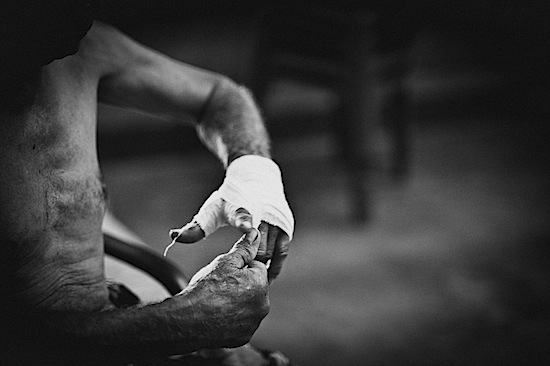The island sits at the foremost northerly tip of the Maldives, within the pristine, lagoon-ringed Haa Alifu coral reef, very little explored by foreigners and all un-polluted by the noise of passing speedboats. What many of us don’t understand is that that more north you go, the additional lush and inexperienced the islands become. therefore whereas Manafaru is fringed by those exquisite, powder-white beaches that the Maldives square measure notable, it additionally includes a jungle-filled interior ripe for exploration.
The island recreates the fashion and charm of ancient Maldivian welcome, whereas seamlessly mixing Asian traditions of simplicity and class to its overall charm. The resort offers tier of serenity unexceeded within the Maldives.
Sleek, up to date and attractive, The island offers unequaled luxury to the discerning few. every villa and suite offers a non-public pool, complete privacy and a private pantryman to pre-empt and exceed your expectations. best culinary art from all corners of the planet combined with numberless on- and off-shore recreational facilities pull together the actually supreme character of the The house at Manafaru Maldives.
LocationThe beautiful island is found within the North Atolls within the Maldives, Haa Alifu coral reef. From Hulhule aerodrome you wish proximately forty five minutes by Airline transfer time. On the Island Hanimaandhoo the powerboat can transfers you in half-hour to your dream vacation.
The house at Manafaru - Maldives - Accommodation Once ashore, guests can create their target one among The Beach House’s sixty eight luxurious villas wherever they'll relish full reign of their own non-public pool, in conjunction with the services of a pantryman World Health Organization can tend to their each would like. All villas feature each trendy technological convenience, while ancient Maldivian vogue is widely known in subject details from the outdoor en-suite style to the thatched roofing.
Accommodations embrace sixteen Beach Villas (1647 sq. ft. or 153 sq. m.), twelve Beach Suites (2422 sq. ft. or 225 sq. m.), thirty eight Over-Water Villas (1572 sq. ft. or 146 sq. m.) one Grand Water tent (4510 sq. ft. or 419 sq. m.) and a Grand Land tent (7459 sq. ft. or 693 sq. m.). every land accommodation will have its own non-public collapsible shelter, in addition as natural parts incorporating the landscape.
Exotic woods, vaulted ceilings and comfy furnishings mix for engaging “beachy” interiors, whereas over-water villas are going to be outfitted with diaphanous flooring to reveal life to a lower place the ocean surface. every villa will be set with up-to-the-second conveniences, as well as high-speed wireless web access, LCD TV, DVD/CD player, luxuriant tub amenities, and in fact impeccable service.
Water Villa With Pool - (21 rooms / units) The Maldivian-style villas stretch out into the lake and square measure alert over water. These intimate and furnished villas feature ample decks with time edged pools, breathless views of the Indian Ocean with glass wainscoted floors that permit quiet observation of the marine life throughout the day or within the evening moonlight. Steps leading directly into the soft sandy lake give immediate access to the tantalizing crystal clear waters. partly out-of-doors bogs with Jacuzzi bathtubs complete the Maldivian ambiance of the Water Villas.
Beach Villa With Pool - (16rooms/units) Leisurely unfold throughout the island’s lush vegetation, the thatched-roof Maldivian-style villas square measure all liberally sized and elegantly embellished. Soft silhouettes, exhilarating surroundings and easy unpretentious class capture the ambiance. out of doors bogs feature low lying outsized bathtubs, out-of-doors rain showers and a deck with cozy loungers. every Beach Villa boasts a non-public collapsible shelter directly on the beach for whiling away the hours and enjoying the scenic lake with its soft white sands.
Ocean Villa With Pool - (17 rooms / units)
This can be a replacement area class, same because the water villas, further facilites that square measure out there includes steam room, steam and hydro shower.
Beach Suite With Pool - (12 rooms / units) The Beach Suites are designed to boost the whole vacation expertise with best comfort and opulent class. These suites square measure encompassed with the luxurious vegetation of the island permitting guests to sink into a quietening tropical reverie. Separate areas for coming together, feeding and sleeping give all the comfort and area one might need. out-of-doors bogs feature lavish Jacuzzi bathtubs and rain showers while every Beach Suite additionally boats a non-public beach collapsible shelter.
Grand Water tent a pair of sleeping room - (01 rooms / units) The Grand Water tent represents the foremost refined and exclusive pedigrees of style, vogue and class. Immersed in unpretentious and chic décor, this tent offers sweeping panoramas of the Indian Ocean, 2 bedrooms, pool, sauna, steam room, Jacuzzi, non-public area, a spacious lounge with 40’’ digital display TV and enormous non-public deck.
Grand Beach tent a pair of sleeping room - (01 rooms / units) The Grand Beach tent options the last word in privacy, luxury and repair. 2 bedrooms, feeding area, separate dressing space, 2 outdoor bogs, sauna, steam room, massage health facility, Jacuzzi, 2 swimming pools and state-of-art recreation enhancements as well as a 40" digital display TV create the Grand Beach tent the last word accommodation expertise.
 Freelance travel photography is a simple approach to earn money with you guessed it-your camera. Even though you do not travel a lot or perhaps believe that you simply can't manage to freelance travel photography remains to be wealth creation alternative for the majority of us.
Freelance travel photography is a simple approach to earn money with you guessed it-your camera. Even though you do not travel a lot or perhaps believe that you simply can't manage to freelance travel photography remains to be wealth creation alternative for the majority of us.



.jpeg)




























